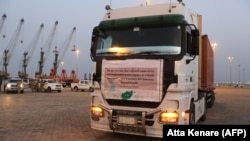The media in India say Iran has dropped India from a railway project that will connect Chabahar, a would be trading hub in southern Iran to Zahedan, the capital of Sistan-Baluchistan Province.
The Hindu reported on Tuesday July 14 that the reason for setting aside India from the project is New Delhi's delay in funding.
The Economic Times also reported that India has been "shunted out of a key Iran railway project," while "China's shadow looms in the background."
Iran's 1350-Kilometer eastern railways is strategically important for the Islamic Republic. It is to connect Chabahar to Zahedan and then to Zaranj at the border with Afghanistan. Chabahar will also be connected to Sarakhs in northeastern Iran via another route.
The railways is to connect Chabahar, Iran's only major port on the Indian Ocean, to Afghanistan and Central Asia with a potential to carry seven million tons of goods per year.
The $1.6 billion contract for the railways was signed during the 2016 visit of Indian Prime Minister Narendra Modi to Tehran.
India would have circumvented Pakistan and export its goods to Afghanistan and Central Asia via Chabahar.
The IRGC's Khatam ol-Anbia HQ has been a partner in the project since 2013, covering the 730-Kilometer distance between Chabahar and Iranshahr.
In September 2019, Iranian Supreme Leader Ali Khamenei allowed the withdrawal of 300 million euros from the country's foreign currency reserve to enable the IRGC to launch the project. The IRGC subsequently started laying the tracks on the route earlier in July.
According to the Hindu, "Last week, Iranian Transport and Urban Development Minister Mohammad Eslami inaugurated the track-laying process for the 628 km Chabahar-Zahedan line, which will be extended to Zaranj across the border in Afghanistan. Officials told the Hindu that the entire project would be completed by March 2022, and that Iranian Railways will proceed without India’s assistance, using approximately $400 million from the Iranian National Development Fund."
The Hindu added that "the development comes as China finalizes a massive 25-year, $400 billion strategic partnership deal with Iran, which could cloud India’s plans."
The strategic partnership, much trumpeted by Iran, is not a sure deal yet. China has remained silent about Iranian claims that an agreement is imminent.
The Hindu also pointed out that U.S. sanctions may have also contributed to pushing India out of the project.
The report added that despite surveys made by Indian engineers, the Indian Tracks Company did not take measures to start the project fearing the consequences of U.S. sanctions.
The daily quoted an Indian official as saying the United States has granted sanction waiver for this project, but under the sanctions, the Indian company found it difficult to supply equipment for the project. Nevertheless, the company says it might join the project again later.
Meanwhile, The Economic Times opined that "Iran's decision to cancel India's participation in the project, coming at the backdrop of a fast-moving strategic deal with China, could soon whip up a storm in diplomatic circles."
Previously, India was one of Iran’s most important trading partners and the second biggest customer for its oil after China.
Statistics provided by India's Ministry of Economic Affairs indicate that during the first five months of 2020 India's exports to Iran had a major decline and reached $808 million.
Meanwhile, India's imports from Iran was than $80 million during the same period. The figure in the previous year was over $2 billion.







